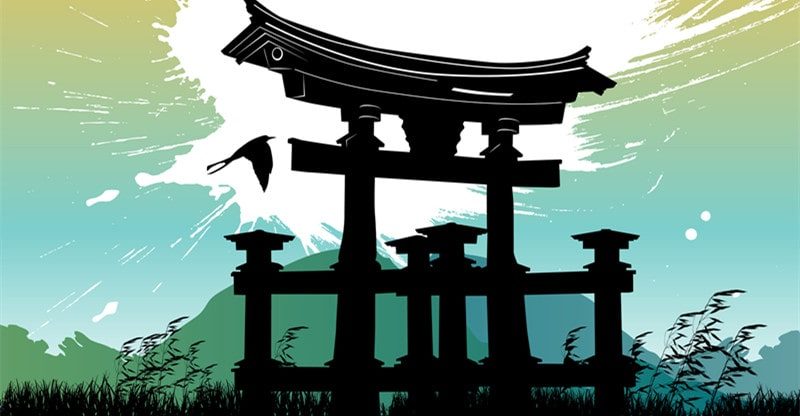Bishamonten, the God of War
Bishamonten the God of War is a major god in Japanese mythology. He was originally called Susanoo-no-Mikoto, but gradually became known as Bishamonten. It is said that he descended to Earth to learn about warfare and diplomacy from humans. Because of this, he is considered to be a god of wisdom.
Bishamonten is the leader of the Shichi-fuku-jin (“Seven Gods of Luck”), and has jurisdiction over prosperity. He is also the protector of warriors and guards them with his sword. Bishamonten rides on a white horse named Ubaibitomaru, which can travel 500 “ri” (about 500 km) in one step.
- History of Bishamonten
- Symbolism of Bishamonten
- Bishamonten in the Chinese Zodiac
- Bishamonten’s Avatar
- Animism in Japan
- The Reach of the God of War
History of Bishamonten
According to the Kojiki (Record of Ancient Matters), Susanoo-no-Mikoto (known as Bishamonten in Japan) lived on the island of Fern in the sea, in what is now known as Izumo in Shimane Prefecture. He killed his brother; he also killed two gods in Annin (“Kumano” 熊野), and then banished five gods called Nintoku to live among humans. He remained at Fern for 100 years, using his magic to bring fire, water, and agriculture to the island.
Susanoo-no-Mikoto eventually married a human princess named Kushinadahime, the daughter of the Emperor of Heaven. They lived happily together for three years, but he became homesick for his other family on earth. When he decided to return after three years, it is said that the gods of Heaven tried to persuade him not to leave by appealing to his pride. Angered by their words, Susanoo set out with Kushinadahime.
Symbolism of Bishamonten
- Bishamonten is the god of wisdom.
- Bishamonten is also connected to agriculture.
- He is also connected to fire, light, and technology.
- For the Shinto religion, he is connected to warriors.
Bishamonten in the Chinese Zodiac
Bishamon is the god of war of the Chinese Zodiac. He is one of the five gods who appear on paper to make predictions about one’s personality and fortune; he also has a counterpart in Japanese mythology named Susanoo-no-Mikoto (known as Bishamonten in Japan).
From their birth until they were in their 20’s, Chinese children are supposed to worship Bishamonten in their culture. He guards them with a sword and a large shield. Those who worship him are supposed to lead a good life and have protection against the devil. Most Chinese people are familiar with his image, but they don’t know his name.
Bishamonten’s Avatar
The Japanese Avatar of Bishamonten is the town of Yokote in Gunma Prefecture. There, in a Buddhist temple, there is a statue of Bishamonten with a sword and a shield. The statue was built in the 17th century and was made from traditional Japanese wood carving and metal casting techniques. However, it was not enshrined until 1860 when Emperor Meiji came to the temple to perform the ceremony. It is designated as a national monument.
Animism in Japan
Bishamonten is not a shinto god. In fact, in Shintoism, there are no gods at all. In the old days, lots of people believed in animism. When a person died, they would have to go to a shrine with offerings so that the gods would accept them. To show their gratitude, the gods will grant them a good life for a certain number of years or even grant them eternal life.
The Japanese are people who are often blessed with their willingness to remain faithful to their traditions. They are one of the few cultures that never changed their beliefs to fit the current reality of the world. For example, even though no god can be seen anymore, they still believe in him and pray to him every day to keep them safe from harm.
The Reach of the God of War
Although not worshipped in modern Japan and China, Bishamonten’s name and attributes live on in art, literature, and religion. From the Chinese Zodiac, to the Bishamonten statue in Yokote, Japan’s oldest town, to the many statues throughout China, this god is still venerated by people of all cultures.
There are ethnic and regional variations, but they all serve as a guide for good fortune and safety. People of Eastern Asia still look to him for protection and guidance in everyday life.



